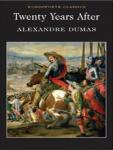
Twenty Years After
by Alexandre Dumas
Twenty Years After (French: Vingt ans après) is a novel by Alexandre Dumas, père, first serialized from January to August, 1845. A book of the D'Artagnan Romances, it is a sequel to The Three Musketeers and precedes The Vicomte de Bragelonne (which includes the sub-plot, Man in the Iron Mask).
The novel follows events in France during La Fronde, during the childhood reign of Louis XIV, and in England near the end of the English Civil War, leading up to the victory of Oliver Cromwell and the execution of King Charles I. Through the words of the main characters, particularly Athos, Dumas comes out on the side of the monarchy in general, or at least the text often praises the idea of benevolent royalty. His musketeers are valiant and just in their efforts to protect young Louis XIV and the doomed Charles I from their attackers. This book is the least well-known of the Musketeer saga but works effectively as a sequel, with reappearances by most main characters (or children of main characters) and a number of subplots.
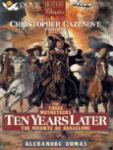
Ten Years Later
by Alexandre Dumas
The Vicomte of Bragelonne: Ten Years Later (French: Le Vicomte de Bragelonne ou Dix ans plus tard) is a novel by Alexandre Dumas. It is the third and last of the d'Artagnan Romances, following The Three Musketeers and Twenty Years After. It appeared first in serial form between 1847 and 1850. In the English translations the 268 chapters of this large volume are usually subdivided into three, but sometimes four or even five individual books. In three-volume English editions the volumes are entitled "The Vicomte de Bragelonne", "Louise de la Vallière", and "The Man in the Iron Mask." Each volume is roughly the length of the original The Three Musketeers. In four-volume editions volume names remain except that "Louise de la Vallière" and "The Man in the Iron Mask" move from second and third volumes to third and fourth, with "Ten Years Later" becoming the second volume. There are usually no volume-specific names in five-volume editions. French academic Jean-Yves Tadié has argued that the beginning of King Louis XIV's personal rule is the novel's real subject.
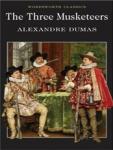
The Three Musketeers
by Alexandre Dumas
The Three Musketeers (French: Les Trois Mousquetaires) is a novel by Alexandre Dumas, first serialized in March–July 1844. Set in the 17th century, it recounts the adventures of a young man named d'Artagnan after he leaves home to travel to Paris, to join the Musketeers of the Guard. D'Artagnan is not one of the musketeers of the title; those are his friends Athos, Porthos, and Aramis, inseparable friends who live by the motto "all for one, one for all" ("un pour tous, tous pour un"), a motto which is first put forth by d'Artagnan.
The story of d'Artagnan is continued in Twenty Years After and The Vicomte of Bragelonne: Ten Years Later. Those three novels by Dumas are together known as the d'Artagnan Romances.
In 1625 d'Artagnan, a poor young nobleman leaves his family in Gascony and travels to Paris with the intention of joining the Musketeer of the Guard.
However, en route, at an inn in Meung-sur-Loire, an older man derides d'Artagnan's horse and, feeling insulted, d'Artagnan demands to fight a duel with him. The older man's companions beat d'Artagnan unconscious with a pot and a metal tong that breaks his sword; his letter of introduction to Monsieur de Tréville, the commander of the Musketeers, is stolen. D'Artagnan resolves to avenge himself upon the man, who is later revealed to be the Comte de Rochefort, an agent of Cardinal Richelieu, who is in Meung to pass orders from the Cardinal to Milady de Winter, another of his agents.
In Paris, d'Artagnan visits de Tréville at the headquarters of the Musketeers, but the meeting is overshadowed by the loss of his letter, and de Tréville refuses his application to join. From de Tréville's window, d'Artagnan sees Rochefort passing in the street below and rushes out of the building to confront him, but in doing so he separately causes offense to three of the Musketeers, Athos, Porthos, and Aramis, who each demand satisfaction; D'Artagnan must duel each of them in turn that afternoon.
When d'Artagnan prepares himself for the first of the three duels, he realizes that his counterparts are friends. But just as he and Athos begin to fight, Cardinal Richelieu's guards appear; they try to arrest the d'Artagnan and the three musketeers for illegal dueling. Although outnumbered, the four men win the battle that follows. In the course of events, d'Artagnan duels and seriously wounds Jussac, one of the Cardinal's officers and a renowned fighter. After learning of this event, King Louis XIII appoints d'Artagnan to des Essarts' company of guards and gives him forty pistoles (currency).
D'Artagnan hires a servant, Planchet, finds lodgings, and, by decree of the King, joins Monsieur des Essart's company of Guards, a less prestigious regiment in which he must serve for two years before being considered for the Musketeers. Shortly after his landlord comes to see him to talk about his wife's kidnapping (she is released presently), he falls in love at first sight with his landlord's pretty young wife, Constance Bonacieux. She works for the Queen Consort of France, Anne of Austria, who is secretly conducting an affair with the Duke of Buckingham. The Queen has just received a gift from her husband Louis XIII, and trying to console her lover, she gives him the diamonds as a keepsake. Cardinal Richelieu, who tries to start a war between France and England, wants to reveal that. Quickly he organizes an event and talks the king into demanding that his wife wear the diamonds at this opportunity.
Constance doesn't succeed in sending her cowardly husband, who has been manipulated by Richelieu, to London, but d'Artagnan and his friends decide to help. On their mission they are frequently attacked by the cardinal's henchmen and therefore only d'Artagnan and Planchet arrive in London (although Planchet does not accompany d'Artagnan to see Buckingham). In the process of getting to England, d'Artagnan is compelled to assault and nearly kill the Comte de Wardes, a friend of the Cardinal's, cousin to de Rochefort, and Milady's lover. Although two of the diamonds have been stolen by Milady, the Duke of Buckingham is able to provide replacements while delaying the thief's return to Paris. D'Artagnan is thus able to return a complete set of jewels to Queen Anne just in time to save her façade of honor and receives from her a beautiful ring as an expression of her gratitude.
Shortly afterwards, d'Artagnan attends a tryst with Madame Bonacieux, but she does not open her door. He notices signs of a struggle, and, asking about, discovers that de Rochefort and Monsieur Bonacieux, acting under the orders of the Cardinal, have assaulted and imprisoned her.
D'Artagnan looks after his friends, who have just recovered from their injuries. He brings them back to Paris and meets Milady de Winter officially. He recognizes her from Meung as one of the Cardinal's agents, but this does not deter him. D'Artagnan quickly develops a crush on the beautiful lady but learns from her handmaiden that she is in fact quite indifferent toward him. Later, though, after attending a tryst with her while pretending to be the Comte de Wardes (the lights are out), he also discovers a fleur-de-lis branded on Milady's shoulder, marking her as a felon. D'Artagnan eludes her attempt on his life and is ordered to the siege of La Rochelle.
Milady fails continuously in killing d'Artagnan, and he is informed that the Queen has managed to save Constance from the prison. In an inn, the musketeers overhear the Cardinal asking Milady to murder the Duke of Buckingham (who supports the Protestant rebels at La Rochelle). He even gives her a categorical pardon in written form, but Athos takes it from her. The next morning, Athos, in search of a quiet place to talk, makes a bet that he, d'Artagnan, Porthos, and Aramis, and their servants, Grimaud, Planchet, Mosqueton, and Bazin, can hold the St. Gervais bastion (captured by des Essarts' company shortly beforehand) for an hour. They get away after an hour and a half, killing 22 Rochellese in total, and finding a way to warn Lord de Winter and the Duke of Buckingham. Milady is imprisoned on arrival in England but soon seduces her guard, Felton (a fictionalization of the real John Felton), and persuades him both to allow her escape and to kill Buckingham, which he does.
On her return to France Milady hides in a convent, where she discovers Constance Bonacieux is also staying. The naive Constance clings to Milady, who sees a chance to get back at d'Artagnan who has crossed her plans with his friends more than once, and fatally poisons Constance before d'Artagnan can retrieve her.
The Musketeers manage to find Milady before she can be rewarded and sheltered by Cardinal Richelieu. They come with an official executioner, put her to trial and sentence her to death. After her execution the four friends return to the siege of La Rochelle. They encounter the dodgy gentleman that has bothered d'Artagnan all the way. The Count of Rochefort arrests d'Artagnan and takes him straight to the Cardinal. When asked about Milady's fate, d'Artagnan can save himself by delivering the Cardinal's endorsement, which had been written for Milady and certifies that the deeds of the carrier are by all means approved by the Cardinal. This does not in and of itself protect him, as it only makes the Cardinal laugh. However, impressed with d'Artagnan's cheek and boldness, and secretly glad to be rid of the treacherous Milady, the Cardinal tears the letter of endorsement up and writes a new order, giving the bearer a promotion to lieutenant in de Treville's company of guards. The Cardinal states that anyone can take the order, but to keep in mind it was intended for d'Artagnan. He takes it to Athos, Porthos, and Aramis in turn, but each refuses it, proclaiming d'Artagnan the more worthy man.
The siege of La Rochelle ends in 1628, which also marks the end of the book. Aramis retires to a monastery, Porthos marries his wealthy mistress, and Athos serves in the Musketeers under D'Artagnan until 1631, when he retires to his mansion in the countryside.
The now four Musketeers meet again in Twenty Years After.
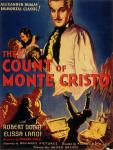
The Count of Monte Cristo
by Alexandre Dumas
This book is an adventure novel by French author Alexandre Dumas (père). It is one of the author's most popular works, along with The Three Musketeers. He completed the work in 1844.
Dumas wrote that the idea of revenge in The Count of Monte Cristo came from a story in a book compiled by Jacques Peuchet, a French police archivist, published in 1838 after the death of the author. Dumas included this essay in one of the editions from 1846. Peuchet told of a shoemaker, Pierre Picaud, living in Nîmes in 1807, who was engaged to marry a rich woman when three jealous friends falsely accused him of being a spy for England. Picaud was placed under a form of house arrest, in the Fenestrelle Fort where he served as a servant to a rich Italian cleric. When the man died, he left his fortune to Picaud whom he had begun to treat as a son. Picaud then spent years plotting his revenge on the three men who were responsible for his misfortune. He stabbed the first with a dagger on which were printed the words, "Number One", and then he poisoned the second. The third man's son he lured into crime and his daughter into prostitution, finally stabbing the man himself. This third man, named Loupian, had married Picaud's fiancée while Picaud was under arrest.
In another of the "True Stories" Peuchet describes a poisoning in a family. This story, also quoted in the Pleiade edition, has obviously served as model for the chapter of the murders inside the Villefort family. The introduction to the Pleiade edition mentions other sources from real life: the Abbé Faria existed and died in 1819 after a life with much resemblance to that of the Faria in the novel. As for Dantès, his fate is quite different from his model in Peuchet's book, since the latter is murdered by the "Caderousse" of the plot. But Dantès has "alter egos" in two other Dumas works; in "Pauline" from 1838, and more significantly in "Georges" from 1843, where a young man with black ancestry is preparing a revenge against white people who had humiliated him.
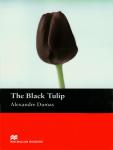
The Black Tulip
by Alexandre Dumas
The story begins with a historical event — the 1672 lynching of the Dutch Grand Pensionary (roughly equivalent to a modern Prime Minister) Johan de Witt and his brother Cornelis, by a wild mob of their own countrymen — considered by many as one of the most painful episodes in Dutch history, described by Dumas with a dramatic intensity.
The main plot line, involving fictional characters, takes place in the following eighteen months; only gradually does the reader understand its connection with the killing of the de Witt brothers.
The city of Haarlem, Netherlands, has set a prize of 100,000 guilders to the person who can grow a black tulip, sparking competition between the country's best gardeners to win the money, honour and fame. The young and bourgeois Cornelius van Baerle has almost succeeded but is suddenly thrown into the Loevestein prison. There he meets the prison guard's beautiful daughter Rosa, who will be his comfort and help, and eventually become his rescuer.
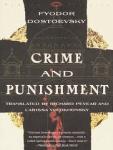
Crime and Punishment
by Fyodor Dostoevsky
This is a novel by the Russian author Fyodor Dostoyevsky. It was first published in the literary journal The Russian Messenger in twelve monthly installments during 1866. It was later published in a single volume. This is the second of Dostoyevsky's full-length novels following his return from ten years of exile in Siberia. Crime and Punishment is the first great novel of his "mature" period of writing.
Crime and Punishment focuses on the mental anguish and moral dilemmas of Rodion Raskolnikov, an impoverished ex-student in St. Petersburg who formulates and executes a plan to kill an unscrupulous pawnbroker for her cash. Raskolnikov argues that with the pawnbroker's money he can perform good deeds to counterbalance the crime, while ridding the world of a worthless vermin. He also commits this murder to test his own hypothesis that some people are naturally capable of such things, and even have the right to do them. Several times throughout the novel, Raskolnikov justifies his actions by connecting himself mentally with Napoleon Bonaparte, believing that murder is permissible in pursuit of a higher purpose.
Raskolnikov, a conflicted former student, lives in a tiny, rented room in Saint Petersburg. He refuses all help, even from his friend Razumikhin, and devises a plan to murder and to rob an unpleasant elderly pawn-broker and money-lender, Alyona Ivanovna. His motivation comes from the overwhelming sense that he is predetermined to kill the old woman by some power outside of himself. While still considering the plan, Raskolnikov makes the acquaintance of Semyon Zakharovich Marmeladov, a drunkard who recently squandered his family's little wealth. He also receives a letter from his sister and mother, speaking of their coming visit to Saint Petersburg, and his sister's sudden marriage plans which they plan to discuss upon their arrival.
After much deliberation, Raskolnikov sneaks into Alyona Ivanovna's apartment where he murders her with an axe. He also kills her half-sister, Lizaveta, who happens to stumble upon the scene of the crime. Shaken by his actions, Raskolnikov manages to steal only a handful of items and a small purse, leaving much of the pawn-broker's wealth untouched. Raskolnikov then flees and, due to a series of coincidences, manages to leave unseen and undetected.
After the bungled murder, Raskolnikov falls into a feverish state and begins to worry obsessively over the murder. He hides the stolen items and purse under a rock, and tries desperately to clean his clothing of any blood or evidence. He falls into a fever later that day, though not before calling briefly on his old friend Razumikhin. As the fever comes and goes in the following days, Raskolnikov behaves as though he wishes to betray himself. He shows strange reactions to whoever mentions the murder of the pawn-broker, which is now known about and talked of in the city. In his delirium, Raskolnikov wanders Saint Petersburg, drawing more and more attention to himself and his relation to the crime. In one of his walks through the city, he sees Marmeladov, who has been struck mortally by a carriage in the streets. Rushing to help him, Raskolnikov gives the remainder of his money to the man's family, which includes his teenage daughter, Sonya, who has been forced to become a prostitute to support her family.
In the meantime, Raskolnikov's mother, Pulkheria Alexandrovna, and his sister, Avdotya Romanovna (or Dounia) have arrived in the city. Avdotya had been working as a governess for the Svidrigaïlov family until this point, but was forced out of the position by the head of the family, Arkady Ivanovich Svidrigaïlov. Svidrigaïlov, a married man, was attracted to Avdotya's physical beauty and her feminine qualities, and offered her riches and elopement. Avdotya, having none of this, fled the family and lost her source of income, only to meet Pyotr Petrovich Luzhin, a man of modest income and rank. Luzhin proposes to marry Avdotya, thereby securing her and her mother's financial safety, provided she accept him quickly and without question. It is for these very reasons that the two of them come to Saint Petersburg, both to meet Luzhin there and to obtain Raskolnikov's approval. Luzhin, however, calls on Raskolnikov while he is in a delirious state and presents himself as a foolish, self-righteous and presuming man. Raskolnikov dismisses him immediately as a potential husband for his sister, and realizes that she only accepted him to help her family.
As the novel progresses, Raskolnikov is introduced to the detective Porfiry, who begins to suspect him for the murder purely on psychological grounds. At the same time, a chaste relationship develops between Raskolnikov and Sonya. Sonya, though a prostitute, is full of Christian virtue and is only driven into the profession by her family's poverty. Meanwhile, Razumikhin and Raskolnikov manage to keep Avdotya from continuing her relationship with Luzhin, whose true character is exposed to be conniving and base. At this point, Svidrigaïlov appears on the scene, having come from the province to Petersburg, almost solely to seek out Avdotya. He reveals that his wife is dead, and that he is willing to pay Avdotya a vast sum of money in exchange for nothing. She, upon hearing the news, refuses flat out, suspecting him of treachery.
As Raskolnikov and Porfiry continue to meet, Raskolnikov's motives for the crime become exposed. Porfiry becomes increasingly certain of the man's guilt, but has no concrete evidence or witnesses with which to back up this suspicion. Furthermore, another man admits to committing the crime under questioning and arrest. However, Raskolnikov's nerves continue to wear thin, and he is constantly struggling with the idea of confessing, though he knows that he can never be truly convicted. He turns to Sonya for support and confesses his crime to her. By coincidence, Svidrigaïlov has taken up residence in a room next to Sonya's and overhears the entire confession. When the two men meet face to face, Svidrigaïlov acknowledges this fact, and suggests that he may use it against him, should he need to. Svidrigaïlov also speaks of his own past, and Raskolnikov grows to suspect that the rumors about his having committed several murders are true. In a later conversation with Dounia, Svidrigaïlov denies that he had a hand in the death of his wife.
Raskolnikov is at this point completely torn; he is urged by Sonya to confess, and Svidrigaïlov's testimony could potentially convict him. Furthermore, Porfiry confronts Raskolnikov with his suspicions and assures him confession would substantially lighten his sentence. Meantime, Svidrigaïlov attempts to seduce Avdotya, but when he realizes that she will never love him, he lets her go. He then spends a night in confusion and in the morning shoots himself. This same morning, Raskolnikov goes again to Sonya, who again urges him to confess and to clear his conscience. He makes his way to the police station, where he is met by the news of Svidrigaïlov's suicide. He hesitates a moment, thinking again that he might get away with a perfect crime, but is persuaded by Sonya to confess.
The epilogue tells of how Raskolnikov is sentenced to penal servitude in Siberia, where Sonya follows him. Avdotya and Razumikhin marry and are left in a happy position by the end of the novel, while Pulkheria, Raskolnikov's mother, falls ill and dies, unable to cope with her son's situation. Raskolnikov himself struggles in Siberia. It is only after some time in prison that his redemption and moral regeneration begin under Sonya's loving influence.
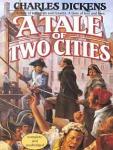
A Tale of Two Cities
by Charles Dickens
A Tale of Two Cities (1859) is a novel by Charles Dickens, set in London and Paris before and during the French Revolution. With well over 200 million copies sold, it ranks among the most famous works in the history of fictional literature.
The novel depicts the plight of the French peasantry demoralized by the French aristocracy in the years leading up to the revolution, the corresponding brutality demonstrated by the revolutionaries toward the former aristocrats in the early years of the revolution, and many unflattering social parallels with life in London during the same time period. It follows the lives of several protagonists through these events. The most notable are Charles Darnay and Sydney Carton. Darnay is a French once-aristocrat who falls victim to the indiscriminate wrath of the revolution despite his virtuous nature, and Carton is a dissipated English barrister who endeavours to redeem his ill-spent life out of his unrequited love for Darnay's wife. The 45-chapter novel was published in 31 weekly installments in Dickens' new literary periodical titled All the Year Round. From April 1859 to November 1859, Dickens also republished the chapters as eight monthly sections in green covers. All but three of Dickens' previous novels had appeared only as monthly installments. The first weekly installment of A Tale of Two Cities ran in the first issue of All the Year Round on 30 April 1859. The last ran thirty weeks later, on 26 November.
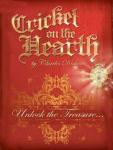
The Cricket on the Hearth
by Charles Dickens
The Cricket on the Hearth. A Fairy Tale of Home is a novella by Charles Dickens.
John Peerybingle, a carrier, lives with his young wife Dot, their baby boy and their nanny Tilly Slowboy. A cricket constantly chirps on the hearth and acts as a guardian angel to the family. One day a mysterious elderly stranger comes to visit and takes up lodging at Peerybingle's house for a few days.
The life of the Peerybingles intersects with that of Caleb Plummer, a poor toymaker employed by the miser Mr. Tackleton. Caleb has a blind daughter Bertha, and a son Edward, who traveled to South America and was thought dead.
The miser Tackleton is now on the eve of marrying Edward's sweetheart, May, but she does not love Tackleton. Tackleton reveals to John Peerybingle that his wife Dot has allegedly cheated on him and shows him a clandestine scene where Dot embraces the mysterious lodger who is in disguise, a man much younger than he actually seems. John is cut to the heart over this as he loves his wife dearly, but decides after some deliberations to relieve his wife of their marriage contract.
In the end, the mysterious lodger is revealed to be none other than Edward who has returned home in disguise. Dot shows that she indeed has been faithful to John. Edward marries May hours before she is scheduled to marry Tackleton. However Tackleton's heart is melted by the Christmas season, like Ebenezer Scrooge, and he surrenders May to her true love.
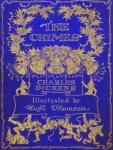
The Chimes
by Charles Dickens
The Chimes: A Goblin Story of Some Bells that Rang an Old Year Out and a New Year In, a short novel by Charles Dickens, was written and published in 1844, one year after A Christmas Carol and one year before The Cricket on the Hearth. It is the second in his series of "Christmas books": five short books with strong social and moral messages that he published during the 1840s.
One New Year's Eve, Trotty, a "ticket-porter" or casual messenger, is filled with gloom at the reports of crime and immorality in the newspapers, and wonders whether the working classes are simply wicked by nature. His daughter Meg and her long-time fiancé Richard arrive and announce their decision to marry next day. Trotty hides his misgivings, but their happiness is dispelled by an encounter with the pompous Alderman Cute, plus a political economist and a young gentleman with a nostalgia, all of whom make Trotty, Meg and Richard feel they hardly have a right to exist, let alone marry.
Trotty carries a note for Cute to Sir Joseph Bowley MP, who dispenses charity to the poor in the manner of a paternal dictator. Bowley is ostentatiously settling his debts to ensure a clean start to the new year, and berates Trotty because he owes a few shillings to his local shop which he cannot pay off. Returning home, convinced that he and his fellow poor are naturally ungrateful and have no place in society, Trotty encounters Will Fern, a poor countryman, and his orphaned niece, Lilian. Fern has been unfairly accused of vagrancy and wants to visit Cute to set matters straight, but from a conversation overheard at Bowley's house, Trotty is able to warn him that Cute plans to have him arrested and imprisoned. He takes the pair home with him and he and Meg share their meagre food and poor lodging with the visitors. Meg tries to hide her distress, but it seems she has been dissuaded from marrying Richard by her encounter with Cute and the others.
In the night, the bells seem to call Trotty. Going to the church, he finds the tower door unlocked and climbs to the bellchamber, where he discovers the spirits of the bells and their goblin attendants who reprimand him for losing faith in man's destiny to improve. He is told that he fell from the tower during his climb and is now dead, and Meg's subsequent life must now be an object lesson for him. There follows a series of visions which he is forced to watch, helpless to interfere with the troubled lives of Meg, Richard, Will and Lilian over the subsequent years. Richard descends into alcoholism; Meg eventually marries him in an effort to save him, but he dies ruined, leaving her with a baby. Will is driven in and out of prison by petty laws and restrictions; Lilian turns to prostitution. In the end, destitute, Meg is driven to contemplate drowning herself and her child, thus committing the mortal sins of murder and suicide. The chimes' intention is to teach Trotty that, far from being naturally wicked, mankind is formed to strive for nobler things, and will fall only when crushed and repressed beyond bearing. Trotty breaks down when he sees Meg poised to jump into the river, cries that he has learned his lesson and begs the Chimes to save her, whereupon he finds himself able to touch her and prevent her from jumping.
With this the vision ends and Trotty finds himself awakening at home as if from a dream, as the bells ring in the New Year, and the book ends with celebrations for Meg and Richard's wedding-day.

Great Expectations
by Charles Dickens
Great Expectations is Charles Dickens' thirteenth novel. It is the second novel, after David Copperfield, to be fully narrated in the first person. Great Expectations is a bildungsroman, or a coming-of-age novel, and the story genre is Victorian Literature. It depicts the growth and personal development of an orphan named Pip.
On Christmas Eve, around 1812, Pip, an orphan who is about six years old, encounters an escaped convict in the village churchyard while visiting the graves of his mother, father, and siblings. The convict scares Pip into stealing food and a file to grind away his shackles from the home he shares with his abusive older sister and her kind, passive husband Joe Gargery, a blacksmith. The next day, soldiers recapture the convict while he is engaged in a fight with another convict; the two are returned to the prison ships they escaped from.
Miss Havisham, a wealthy spinster, who wears an old wedding dress and lives in the dilapidated Satis House, asks Pip's "Uncle Pumblechook" (who is actually Joe's uncle) to find a boy to play with her adopted daughter Estella. Pip begins to visit Miss Havisham and Estella, with whom he falls in love with Miss Havisham's encouragement. Pip visits Miss Havisham multiple times, and during one of these visits, he brings Joe along. During their absence, Mrs. Joe is attacked by a mysterious individual and lives out the rest of her life as a mute invalid.
Later, when Pip is a young apprentice at Joe's blacksmith shop, a lawyer, Mr. Jaggers, approaches him and tells him he is to receive a large sum of money from an anonymous benefactor and must immediately leave for London, where he is to become a gentleman. Assuming that Miss Havisham is his benefactress, he visits her and Estella, who has returned from studying on the Continent.
Years later, Pip has reached adulthood and is now heavily in debt. Abel Magwitch, the convict he helped, who was transported to New South Wales where he eventually became wealthy, reveals himself to Pip as his benefactor. There is a warrant for Magwitch's arrest in England, and he will be hanged if he is caught. Pip and his friends Herbert Pocket and Startop hatch a plan for Magwitch to flee by boat. Pip also discovers that Estella is the daughter of Magwitch and Mr. Jaggers' housemaid, Molly, whom Jaggers defended in a murder charge and who gave up her daughter to be adopted by Miss Havisham.
Pip learns that Miss Havisham's fiancé jilted her, resulting in her strange behaviour and desire to avenge mankind by using Estella to break Pip's heart. He confronts Miss Havisham with Estella's history. Miss Havisham stands too close to the fire which ignites her dress. Pip is burned while saving her, but she eventually dies from her injuries, lamenting her manipulation of Estella and Pip.
A few days before the escape, Joe's journeyman, Orlick, who was responsible for the attack on Mrs. Joe, attacks Pip. Herbert Pocket and his friends save Pip and prepare for the escape.
During the escape, Magwitch kills his enemy Compeyson, a con artist and Miss Havisham's fiancé. Police capture Magwitch and jail him. Pip visits a deathly ill Magwitch in jail and tells him Estella is alive. Barely alive, Magwitch responds with a squeezing of Pip's palm and dies shortly after, before his execution. Pip is about to be arrested for unpaid debts when he falls ill. Joe nurses him back to health and pays off Pip's debts. Pip realises that in his fruitless pursuit of Estella and wealth, he has callously ignored Joe. Realising the error of his ways, Pip returns to propose to Biddy, only to find that she and Joe have married.
Pip asks Joe for forgiveness, and Joe forgives him. As Pip has lost his fortune upon Magwitch's death, he is no longer a gentleman. Pip promises to repay Joe and goes to Egypt, where he shares lodgings with Herbert and Clara and works diligently as a clerk.
Eleven years later, Pip visits the ruins of Satis House and meets Estella, whom her dead husband abused. She asks Pip to forgive her, assuring him that misfortune has opened her heart and that she now empathises with Pip. As Pip takes Estella's hand and leaves the ruins of Satis House, he sees "no shadow of another parting from her."

A Christmas Carol
by Charles Dickens
A Christmas Carol is a novella by English author Charles Dickens, first published by Chapman & Hall on 19 December 1843. The story tells of sour and stingy Ebenezer Scrooge's ideological, ethical, and emotional transformation resulting from supernatural visits from Jacob Marley and the Ghosts of Christmas Past, Present, and Yet to Come. The novella met with instant success and critical acclaim.
The book was written and published in early Victorian Era Britain, a period when there was both strong nostalgia for old Christmas traditions and an initiation of new practices such as Christmas trees and greeting cards. Dickens's sources for the tale appear to be many and varied but are principally the humiliating experiences of his childhood, his sympathy for the poor, and various Christmas stories and fairy tales.
The tale has been viewed by critics as an indictment of 19th-century industrial capitalism. It has been credited with restoring the holiday to one of merriment and festivity in Britain and America after a period of sobriety and sombreness. A Christmas Carol remains popular, has never been out of print, and has been adapted to film, stage, opera, and other media multiple times.
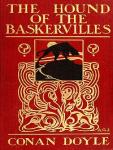
The Hound of the Baskervilles
by Arthur Conan Doyle
The Hound of the Baskervilles is the third of four crime novels by Sir Arthur Conan Doyle featuring the detective Sherlock Holmes. Originally serialised in The Strand Magazine from August 1901 to April 1902, it is set largely on Dartmoor in Devon in England's West Country and tells the story of an attempted murder inspired by the legend of a fearsome, diabolical hound.
In 2003 the book was listed on the BBC's The Big Read poll of the UK's "best-loved novel."
The Hound of the Baskervilles is the classic detective chiller. The Baskerville family is haunted by a phantom beast which roams the mist-enshrouded wilds of Dartmoor. Now The Hound seems to be stalking the young Sir Henry, new heir to the Baskerville estate. Is this devilish spectre the manifestation of the family curse? Or is Sir Henry the victim of a vile and scheming murderer? Only Sherlock Holmes can solve the mystery.
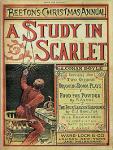
A Study In Scarlet
by Arthur Conan Doyle
This is a detective mystery novel written by Sir Arthur Conan Doyle, introducing his new character of Sherlock Holmes, who later became one of the most famous literary detective characters. He wrote the story in 1886, and it was published the next year. The book's title derives from a speech given by Holmes to his sidekick Doctor Watson on the nature of his work, in which he describes the story's murder investigation as his "study in scarlet": "There’s the scarlet thread of murder running through the colourless skein of life, and our duty is to unravel it, and isolate it, and expose every inch of it."
The story, and its main character, attracted little public interest when it first appeared. Only 11 complete copies of Beeton's Christmas Annual 1887 are known to exist now and they have considerable value. Although Conan Doyle wrote 56 short stories featuring Holmes, A Study in Scarlet is one of only four full-length novels in the original canon. The novel was followed by The Sign of Four, published in 1890. A Study in Scarlet was the first work of fiction to incorporate the magnifying glass as an investigative tool.
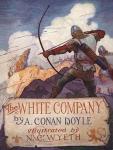
The White Company
by Arthur Conan Doyle
The White Company is a historical adventure by Arthur Conan Doyle set during the Hundred Years' War.[1] The story is set in England, France, and Spain, in the years 1366 and 1367, against the background of the campaign of Edward, the Black Prince to restore Peter of Castile to the throne of the Kingdom of Castile. The climax of the book occurs before the Battle of Nájera.
At the age of twenty, the young Alleyne, son of Edric, intelligent, skilled, and well-liked, though sheltered and naive, leaves the Catholic abbey where he has been raised and goes out to see the world, in accordance with the terms of his father's will. The same day, the abbot banishes John of Hordle, for worldly behavior: great appetite, teasing, and flirting. At the Pied Merlin inn, they make friends with veteran archer Sam Aylward. He has returned to England from France to recruit for the White Company of mercenaries, and brings an request for Sir Nigel Loring of Christchurch to take command. Aylward and John continue to Christchurch, while Alleyne detours to visit his older brother, the "socman" or landlord of Minstead, whose fierce reputation has grown to wickedness.
As the brothers meet for the first time since Alleyne was an infant, the socman is threatening a lovely maiden, and still furious their father gave three hides of land (80–120 acres) to the monastery for the boy's support. Maude escapes the socman with Alleyne's aid, and they flee on foot to find her squire and horse. Maude makes a striking impression on the abbey-raised young man, and she laughs when Alleyne states that his intention to rejoin his friends will lead to Sir Nigel Loring. Alleyne meets up again with Aylward and Hordle John, and the three friends meet Sir Nigel and his formidable wife Mary. Alleyne is taken on as squire to Sir Nigel and and tutor to his daughter, who Alleyne discovers is the same Maude he saved from his evil brother. When the men eventually depart for France, the young couple admit their love, but only to each other. En route to Gascony, our heroes destroy pirates, then report to the court of the Prince of Wales in Bordeaux.
After adventures fearful and funny, the valiant fighters lead the White Company to join the Prince. The Spanish and French attack them in a narrow ravine, where the mighty warriors are almost all destroyed and the Company must disband. John and Alleyne, badly wounded, survive, but Sir Nigel and Aylward are missing and presumed dead. The English go on to win the Battle of Nájera, fulfilling the mission. The Prince knights Alleyne in his sick bed, and the former socman has died. Sir Alleyne Edricson, new socman, returns victorious, John his squire, to snatch Maude from the doors of the nunnery, for marriage. En route back to rescue their friends, all reunite for a happy ever after.

The Vital Message
by Arthur Conan Doyle
The Vital Message was written by Arthur Conan Doyle. It was first Published in the United States by the H. Duran Company of New York in 1919.
In "The New Revelation" the first dawn of the coming change has been described. In "The Vital Message" the sun has risen higher, and one sees more clearly and broadly what our new relations with the Unseen may be. As I look into the future of the human race I am reminded of how once, from amid the bleak chaos of rock and snow at the head of an Alpine pass, I looked down upon the far stretching view of Lombardy, shimmering in the sunshine and extending in one splendid panorama of blue lakes and green rolling hills until it melted into the golden haze which draped the far horizon. Such a promised land is at our very feet which, when we attain it, will make our present civilisation seem barren and uncouth. Already our vanguard is well over the pass. Nothing can now prevent us from reaching that wonderful land which stretches so clearly before those eyes which are opened to see it. That stimulating writer, V. C. Desertis, has remarked that the Second Coming, which has always been timed to follow Armageddon, may be fulfilled not by a descent of the spiritual to us, but by the ascent of our material plane to the spiritual, and the blending of the two phases of existence. It is, at least, a fascinating speculation. But without so complete an overthrow of the partition walls as this would imply we know enough already to assure ourselves of such a close approximation as will surely deeply modify all our views of science, of religion and of life. What form these changes may take and what the evidence is upon which they will be founded are briefly set forth in this volume." - Sir Arthur Conan Doyle